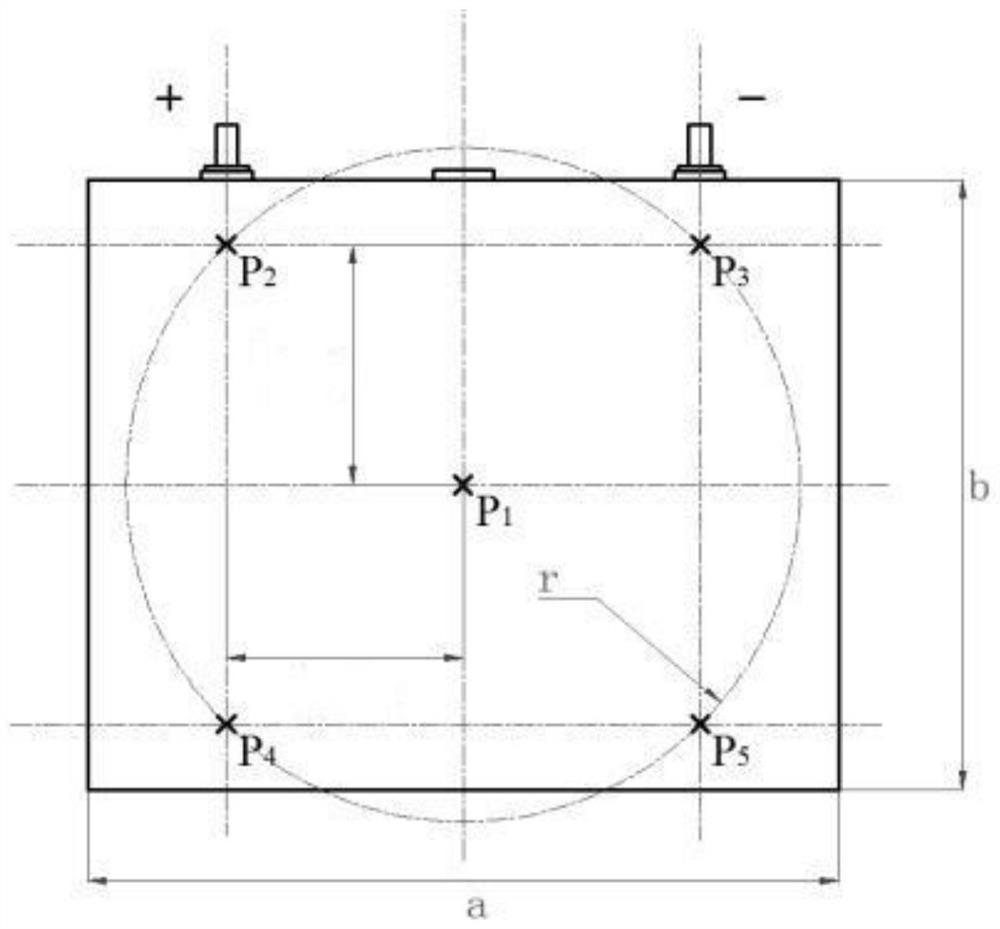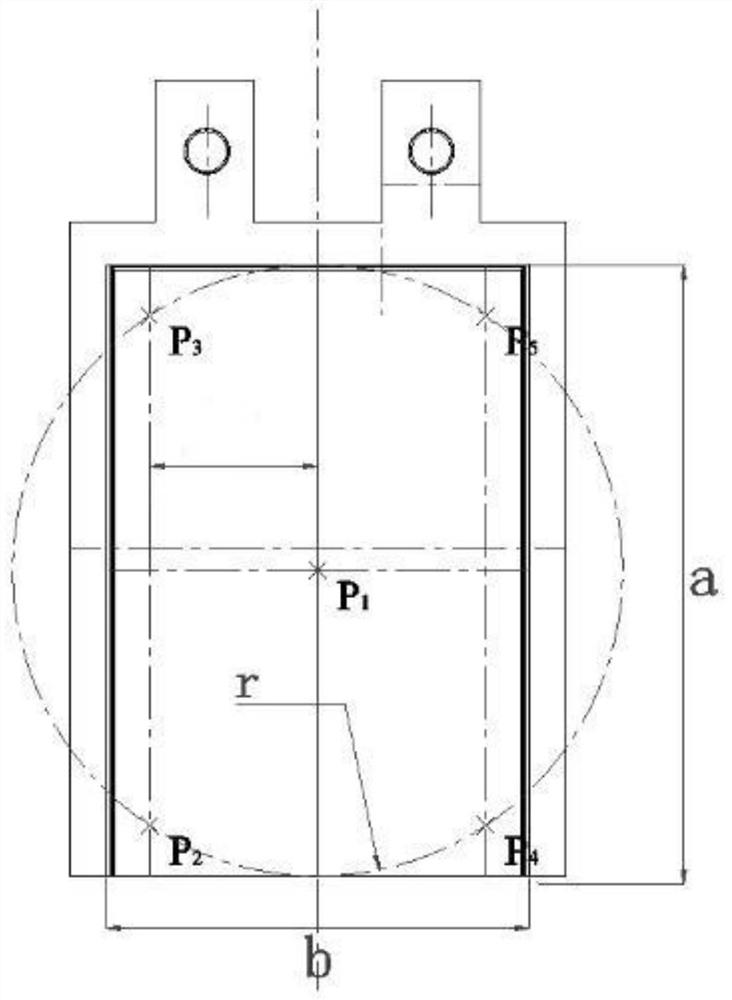A performance evaluation method and evaluation system for flame-retardant materials for secondary batteries
A technology of flame-retardant materials and secondary batteries, which is applied in the field of electrochemical power sources and energy storage, can solve the problems of large thickness and weight of flame-retardant materials, waste of materials, and large space occupied by flame-retardant materials, so as to reduce the volume fraction and Parts by mass, reducing the risk factor, and improving the effect of flame retardant performance
- Summary
- Abstract
- Description
- Claims
- Application Information
AI Technical Summary
Problems solved by technology
Method used
Image
Examples
example 1
[0121] (1) Under the current rate of 1C, adjust the SOC state of charge of the secondary battery without flame retardant material to 100% with a battery charge and discharge meter, and weigh m 0 =234g;
[0122] (2) In the "mCp" mode, use an adiabatic acceleration calorimeter to measure the specific heat capacity Cp of the secondary battery without flame retardant materials 0 =1.0121J(g·k) -1 ;
[0123] (3) Set 5 temperature sensors on the surface of the secondary battery without flame retardant materials, corresponding to 5 points on the secondary battery respectively: P1-P5; P1 is the center of one side (ab side) of the battery, P2 , P3, P4 and P5 are respectively located on the circle with P1 as the center and R=35mm as the radius, P2: (-20,22), P3: (20,22), P4: (-20,-22), P5: (20,-22); P1-P5 points correspond to the measured temperature as T1-T5, Tm=max(T1, T2, T3, T4, T5);
[0124]Overcharge the secondary battery at a current rate of 2C in an adiabatic environment, the...
example 2
[0144] (1) Under the current rate of 1C, adjust the SOC state of charge of the secondary battery without flame retardant material to 100% with a battery charge and discharge meter, and weigh m 0 =457g;
[0145] (2) In the "mCp" mode, use an adiabatic acceleration calorimeter to measure the specific heat capacity Cp of the secondary battery without flame retardant materials 0 =1.3827J(g·K) -1 ;
[0146] (3) Set 5 temperature sensors on the surface of the secondary battery without flame retardant materials, corresponding to 5 points on the secondary battery: P1-P5; P1 is the center of one side (ab side) of the battery, P2 , P3, P4 and P5 are respectively located on the circle with P1 as the center and R=40mm as the radius, P2: (-33,50), P3: (33,50), P4: (-33,50), P5 : (33,-50); P1-P5 points correspond to the measured temperature as T1-T5, Tm=max(T1, T2, T3, T4, T5);
[0147] Overcharge the secondary battery at a current rate of 2C in an adiabatic environment, the temperature...
PUM
 Login to View More
Login to View More Abstract
Description
Claims
Application Information
 Login to View More
Login to View More - R&D
- Intellectual Property
- Life Sciences
- Materials
- Tech Scout
- Unparalleled Data Quality
- Higher Quality Content
- 60% Fewer Hallucinations
Browse by: Latest US Patents, China's latest patents, Technical Efficacy Thesaurus, Application Domain, Technology Topic, Popular Technical Reports.
© 2025 PatSnap. All rights reserved.Legal|Privacy policy|Modern Slavery Act Transparency Statement|Sitemap|About US| Contact US: help@patsnap.com



